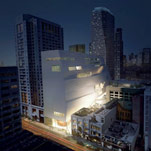MY vision was fairly good until I bought a home. Then a sort of blindness set in. The holes I drilled in my kitchen ceiling five years ago completely disappear whenever I walk into the room. I fail to see the pockmarks in the staircase. A light switch in my office has been covered by duct tape since early 2010, or so I’ve been told.
The Pragmatist
Spruced Up for the Season

By BOB TEDESCHI
Published: November 30, 2011
Multimedia
Related
In medical circles, this vision abnormality is known as “having a life,” and it has only one reliable cure — hosting a party. So when we recently committed to entertaining friends, I suddenly started seeing the house as our guests would.
With the holidays arriving, I chose to focus on my most prominent blind spot — my horrific front door, which had cobwebs, circa-1970 lighting fixtures and a doorknob with the charm of a spent artillery shell. Realizing that I didn’t need to fix the door so much as erase it and start from scratch, I sought counsel from three experts — Victoria Hagan, a Manhattan-based designer; Ward Welch, a principal with CWB Architects in Brooklyn; and Karin Blake, a designer in Malibu, Calif.
If you spend just a few hours and as little as $200 or so, my advisers said, you can give your guests a proper greeting and maybe even make yourself feel welcome the next time you arrive home.
“You’ve got more important things going on, just keeping the inside of the house working,” Mr. Welch said. “But the front door is more than just aesthetics. It really sets the tone for the rest of the house.”
People can wait until the day of the party if they are just replacing a doormat, hanging a wreath and painting the door. (My panelists offered a few tips for these tasks, which I’ll get to later.)
But if you’d like to upgrade the door fittings, as I did, don’t wait until the last minute. For one thing, retailers like Restoration Hardware and Pottery Barn typically don’t carry such items in their stores.
A bigger problem comes when installing the new doorknobs and locks. I initially chose a set from Baldwin’s elegant Estate 5000 series; the knob ($244) and deadbolt ($91) don’t have the external screws and other less stylish touches commonly seen on cheaper hardware.
When Mr. Welch recommended hiring a carpenter to install these items, I hesitated, recalling one day this summer when my 9-year-old son easily put a knob on our back door. But, Mr. Welch said, some hardware, like mortise locks and more unusual knobs like the one I ordered, are much trickier to handle.
I didn’t take him at his word. I should have.
It took me 90 minutes just to remove the existing deadbolt, which lacked visible screws. I tried every approach suggested online, then channeled my inner Neanderthal and tore it off with whatever tools were within reach. Then I spent another 90 minutes installing the new one, including a hair-raising step — trimming the lever that controls the bolt — that I nearly botched.
But it was easier than installing the doorknob.
One part of the knob mechanism, the retractable metal tongue that secures the door to the door frame, was too long for the existing hole, so I spent 45 minutes enlarging that notch. When I finally slipped that part into place, the shaft of the knob assembly was so far off-center that the decorative plate wouldn’t cover the hole in the door.
I considered crafting a new hole. With my fist.
Since I couldn’t wait a week (or several) for a carpenter, I headed to Home Depot and bought a Schlage doorknob (around $29). It wasn’t nearly as distinctive as the Baldwin (which I plan to return), but it was “guaranteed to fit,” the packaging promised, and it took me only about 10 minutes to install.
To make the painting easier, I then removed the hardware, even the new stuff, and put a fresh coat of paint on the door exterior (Benjamin Moore Regal Select, $20 a quart; Corona Cortez 2.5-inch brush, $18). This job took only about an hour, both because the door needed only minimal prep work and because I could skip the primer — I was painting a darker blue over a lighter blue.
We’d never had a knocker, but Ms. Hagan said she’s a “big believer in them, since they say hello in a nice way.”
We considered knockers from Restoration Hardware (between $28 and $50) and Pottery Barn (between $29 and $60), but settled on Baldwin’s Ring knocker ($90) that matched the other hardware.
As I was selecting this and other fittings, on Mr. Welch’s advice I made sure to measure various parts of the door. The panels — the broad rectangles on the door face — are surrounded by vertical strips called stiles, and horizontal strips called rails. Knockers, address numbers and all other hardware should fit those spaces, he said, and also be in proper scale with one another.
“People often buy something from a catalog and not see that it’s way too big,” Mr. Welch said.
- 1
- 2










